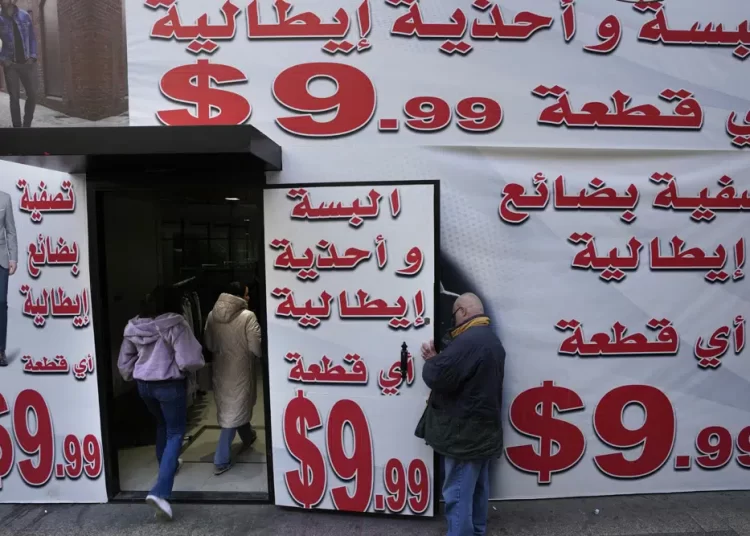BEIRUT — When Moheidein Bazazo opened his Beirut mini-market in 1986, during some of the fiercest fighting in Lebanon’s civil war, he didn’t expect it to thrive. But several years later, he had shelves full of food and needed 12 employees to help him manage a bustling business.
Those days are over. Bazazo now mostly works alone, often in the dark to reduce his electric bill. Regular customers are struggling to make ends meet, and as they buy less so does he, leaving some shelves and refrigerators bare.
With the Lebanese economy in shambles and its currency in free fall, Bazazo spends much of his time trying to keep up with a fluctuating exchange rate. Businesses like his are increasingly leaning on one of the world’s most reliable assets — the U.S. dollar — as a way to cope with the worst financial crisis in its modern history.
“I once lived a comfortable life, and now I’m left with just about $100 after covering the shop’s expenses” at the end of the month, Bazazo said, crunching numbers into a calculator. “Sometimes it feels like you’re working for free.”
The Lebanese pound has lost 95% in value since late 2019, and now most restaurants and many stores are demanding to be paid in dollars. The government recently began allowing grocery stores like Bazazo’s to start doing the same.
While this “dollarization” aims to ease inflation and stabilize the economy, it also threatens to push more people into poverty and deepen the crisis.
That’s because few in Lebanon have access to dollars to pay for food and other essentials priced that way. But endemic corruption means political and financial leaders are resisting the alternative to dollarization: long-term reforms to banks and government agencies that would end wasteful spending and jump-start the economy.
Other countries like Zimbabwe and Ecuador have turned to the dollar to beat back hyperinflation and other economic woes, with mixed success. Pakistan and Egypt also are struggling with crashing currencies but their economic crises are largely tied to an outside event — Russia’s war in Ukraine, which has caused food and energy prices to soar.
Lebanon’s woes are much of its own making.
As the country felt the impacts of the COVID-19 pandemic, a deadly Beirut port explosion in 2020 and Russia’s invasion Ukraine, its central bank simply printed more currency, eroding its value and causing inflation to soar.
Three-quarters of Lebanon’s 6 million people have fallen into poverty since the 2019 crisis began. Crippling power cuts and medicine shortages have paralyzed much of public life.
Currency shortages prompted banks to limit withdrawals, trapping millions of people’s savings. It’s led some in desperation to hold up banks to forcibly take back their money.
The damage of the last few years was magnified by decades of economic mismanagement that allowed the government to spend well beyond its means. The head of the country’s Central Bank was recently charged with embezzling public funds and other crimes.
The pulverized Lebanese pound fluctuates almost hourly. Though officially pegged to the dollar since 1997, the pound’s value is dictated now by an opaque black market rate that has become standard for most goods and services.






Discussion about this post